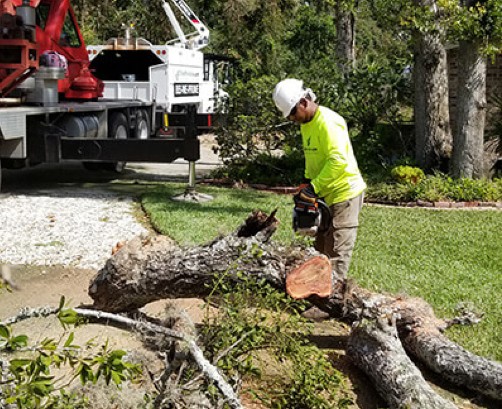The Benefits Of Top-Quality Tree Work
TREE WORK
1. Tree Removal:- Tree removal is done to get rid of trees that are dead or dying, as well as those that have become dangerous. Removing plants may also help to eliminate competition for light and space, allowing the remaining plants to grow and flourish.
2. Topping:- Topping is the drastic removal or cutting back of large branches in mature trees. The tree is sheared like a hedge and the main branches are cut to stubs. Topping is often referred to as heading, stubbing, or dehorning.
3. Elevating:- The removal of lower limbs and branching to give the tree a taller appearance is known as tree elevation.
4. Pruning:- Pruning helps trees grow strong and look neat and attractive. One prunes a tree to remove damaged branches, allow for new growth or create a distinctive shape. It’s important to do it correctly, so you don’t end up damaging the tree
5. Thinning:- In forestry, thinning is the selective removal of trees, primarily undertaken to improve the growth rate or health of the remaining trees. Overcrowded trees are under competitive stress from their neighbors.

6. Feeding:- Fertilizing your lawn regularly with a lawn food helps to feed your existing trees. Ross Root Feeders are an easy way to feed larger trees injecting a water-soluble fertilizer into the soil/root zone, as well as watering the tree and lightly aerating the soil
7. Spraying for Insect & Planting:- Foliar spray applications can be used for a variety of purposes. These treatments are applied directly onto the foliage of trees and shrubs when needed to help control many insects or even diseases. Certain aphids, mites, and scale insects, among others, can be well-managed with foliar applications
8. Mulching:- Tree mulching provides so many benefits, most importantly increased growth. Everyone wants a fast growing tree and proper mulching is the key
9. Storm Cleanup:- When dealing with storm-damaged trees and branches, it’s best to stop attempting to clean up the mess yourself. Putting your own protection at risk and causing further damage to your house. Instead, employ specialists who have dealt with storm-related hazards such as broken power lines, heavy tree trunks, standing water, and more.
